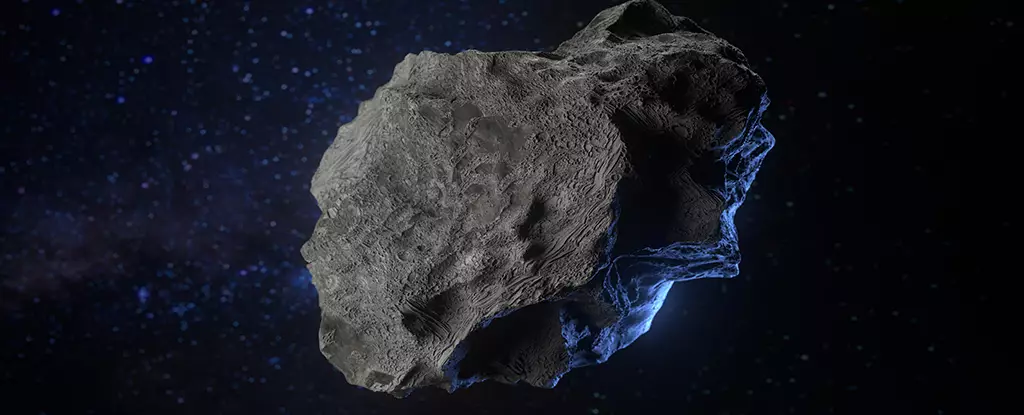NASA’s Jet Propulsion Laboratory has recently detected a colossal menace hurtling towards Earth – a massive asteroid ominously referred to as a “city killer.” This giant space rock, measuring approximately 890 feet in diameter, will make its closest approach to our planet, coming within a distance of 1.77 million miles. To put this vast distance into perspective, it is about 7.4 times the average distance between Earth and the Moon. The significance of this event lies not only in its size but also in its sheer velocity, traveling at a staggering speed of approximately 41,000 miles per hour.
Despite its formidable dimensions, the colossal asteroid will remain hidden from the naked eye due to its distance. Experts estimate that it will appear about 10,000 times fainter than the faintest stars visible without the aid of a telescope. Gianluca Masi, an astrophysicist and scientific director of the Virtual Telescope Project, emphasized the minuscule visibility of the asteroid, stating that it will be indistinguishable without a telescope.
A Glimpse into the Skies
For those eager to catch a glimpse of this celestial event, there is good news. Gianluca Masi and his team will be livestreaming the asteroid’s passage starting at 1 pm ET today. The unmissable livestream can be accessed either through YouTube or by following the video provided below. The livestream will provide viewers with the unique opportunity to witness the asteroid as a tiny dot moving against a backdrop of fixed tiny dots, representing other stars. The event is anticipated to last approximately 45 minutes, offering an enthralling spectacle for all those fortunate enough to bear witness.
Following its close brush with Earth, Asteroid 2008 OS7 will embark on an elongated journey through our Solar System, tracing its oblong-shaped orbit. This particular trait causes its distance from Earth to fluctuate significantly each time it nears our planet. For instance, Space Reference estimates that during its next close approach in July 2037, it will be positioned at a distance of approximately 9.7 million miles from Earth. Despite the variations in its trajectory, its size and close proximity to Earth have led NASA to categorize it as a “potentially hazardous” asteroid.
The designation of “potentially hazardous” is reserved for asteroids with a diameter of at least 460 feet and whose orbit brings them within a distance of approximately 4.65 million miles from Earth. Presently, scientists have identified over 34,000 near-Earth objects, with a mere 2,300 recognized as potentially hazardous. However, NASA postulates that numerous undiscovered asteroids of similar magnitude are yet to be detected. The grim reality is that in the event of an impending Earth impact, countermeasures would require a substantial window of preparation, ideally spanning five to ten years.
In light of this potential threat, NASA’s Jet Propulsion Laboratory is actively developing the Near-Earth Object Surveyor mission, scheduled for launch in September 2027. This groundbreaking initiative involves deploying an infrared space telescope into Earth’s orbit to expand NASA’s range and capabilities in detecting near-Earth objects. The main objective is to enhance our ability to identify and assess potential risks posed by these celestial wanderers, thus equipping us with the vital knowledge required to deflect or neutralize any future threats to our planet. The relentless pursuit of vigilance remains the cornerstone of our collective defense against the ever-present dangers emanating from the cosmos.
The imminent approach of the “city killer” asteroid serves as a potent reminder of the unpredictable dangers that lurk within our celestial neighborhood. While humanity may be safe from this particular colossal threat, the realization that countless unseen asteroids continue to traverse our skies undetected should fuel our determination to invest in advanced technologies and scientific endeavors aimed at safeguarding the future of our planet.


Leave a Reply